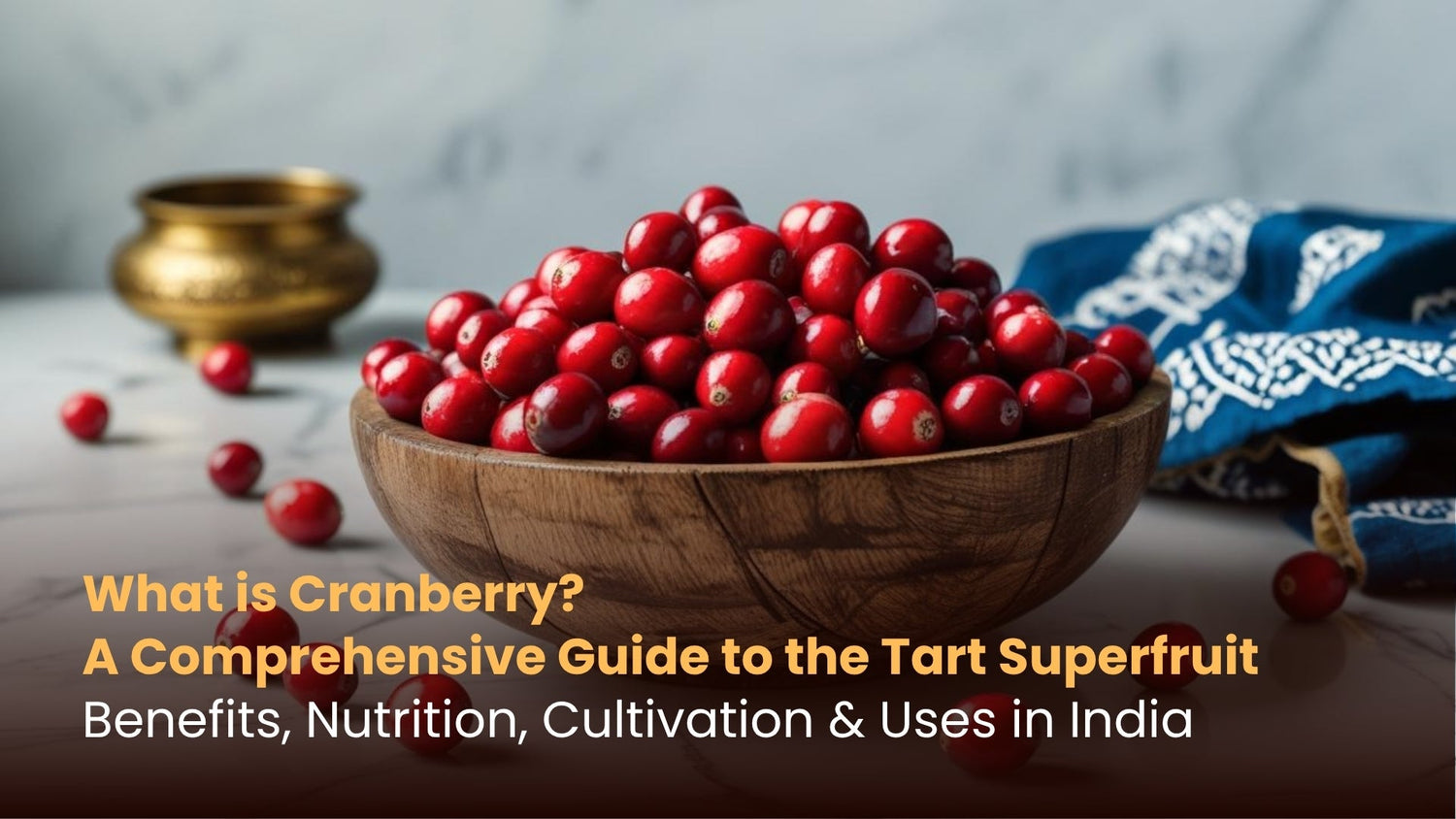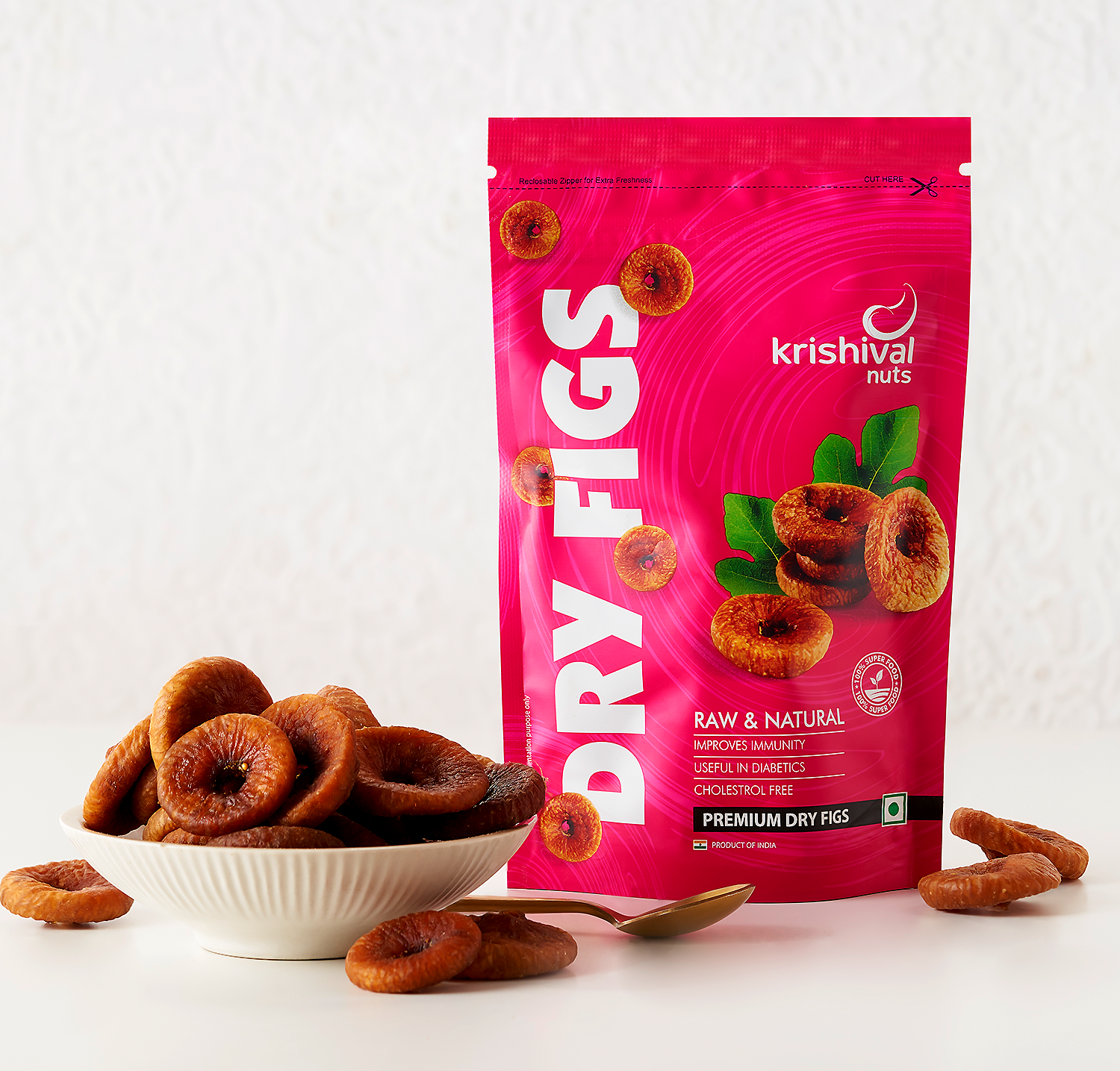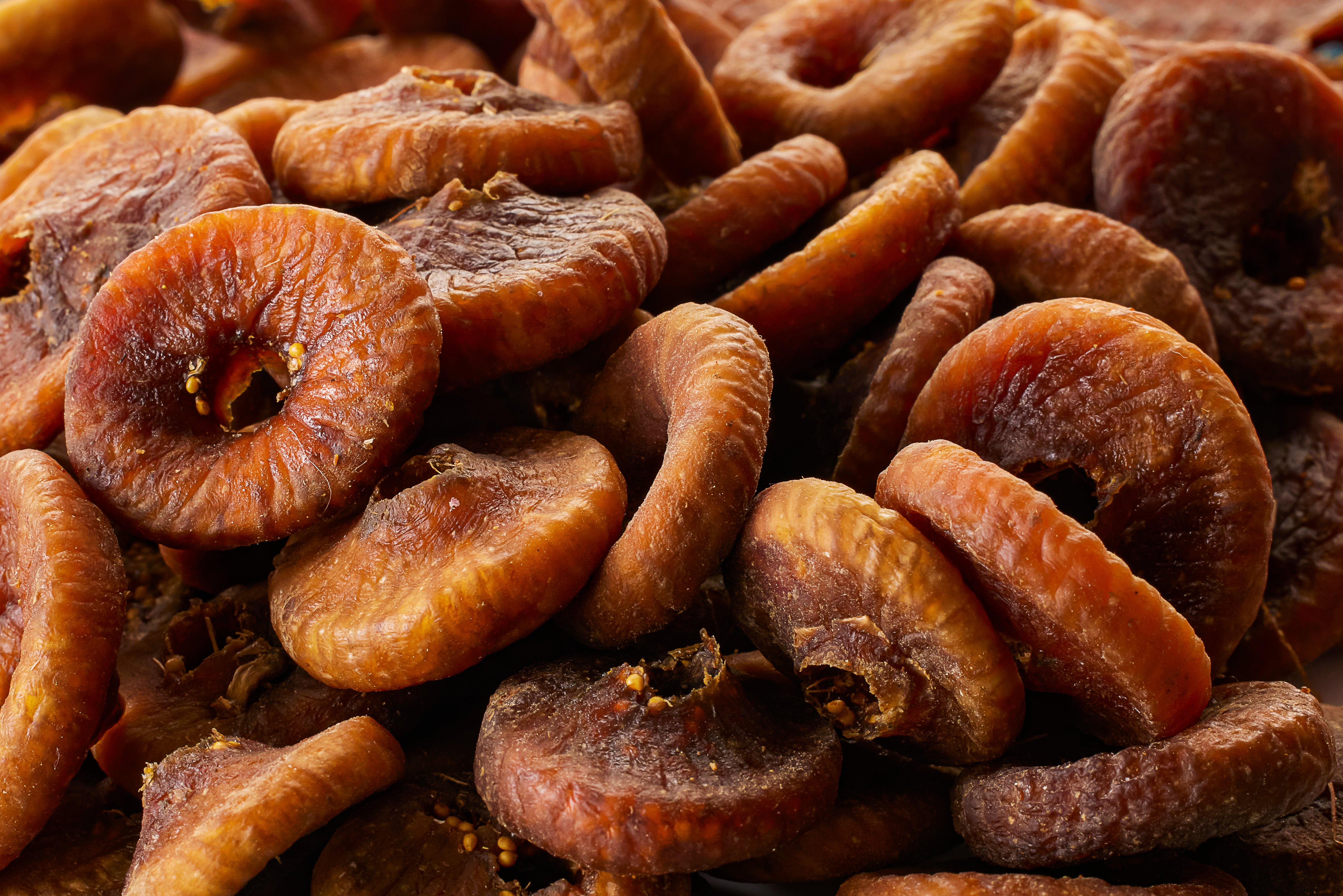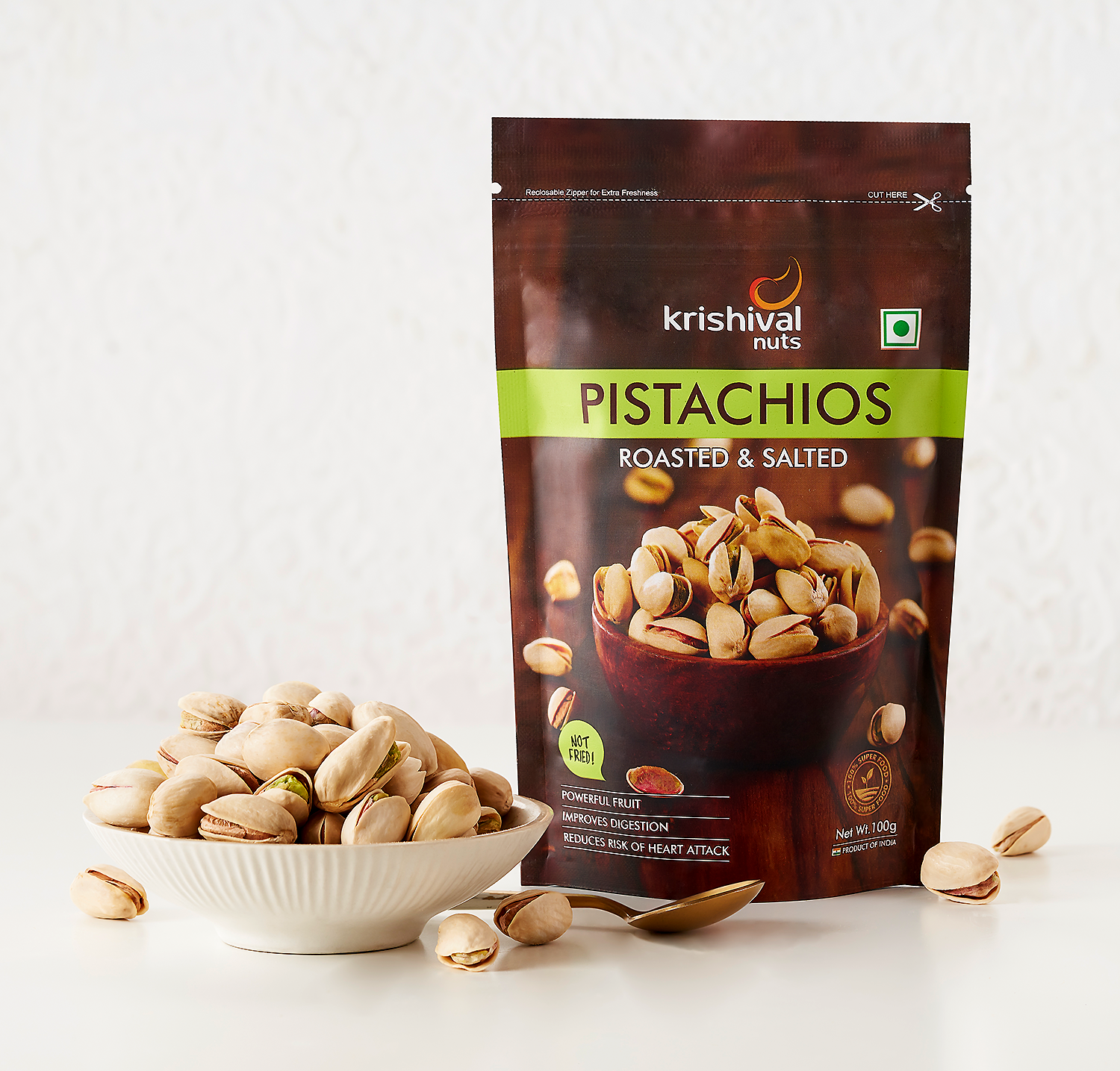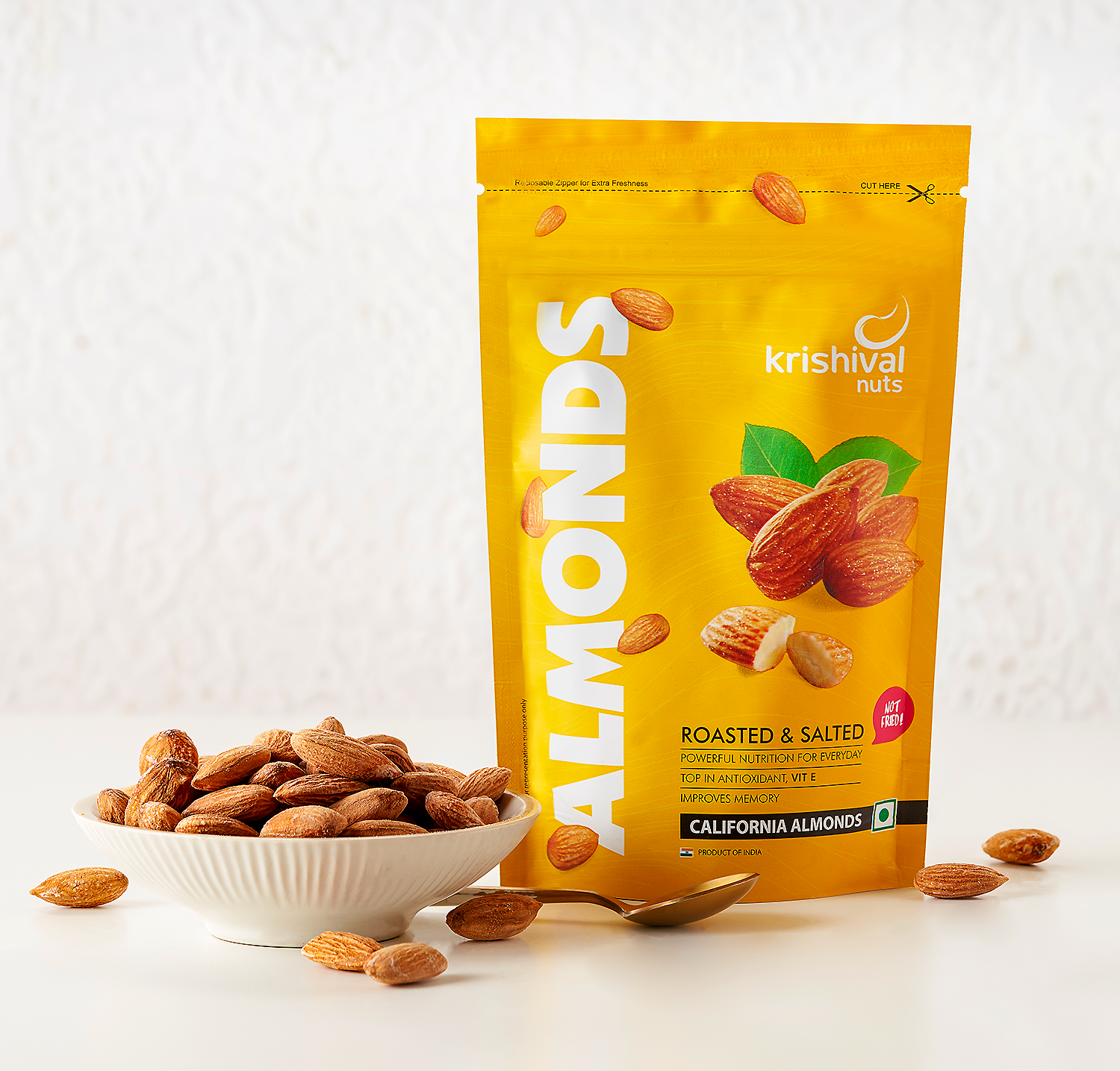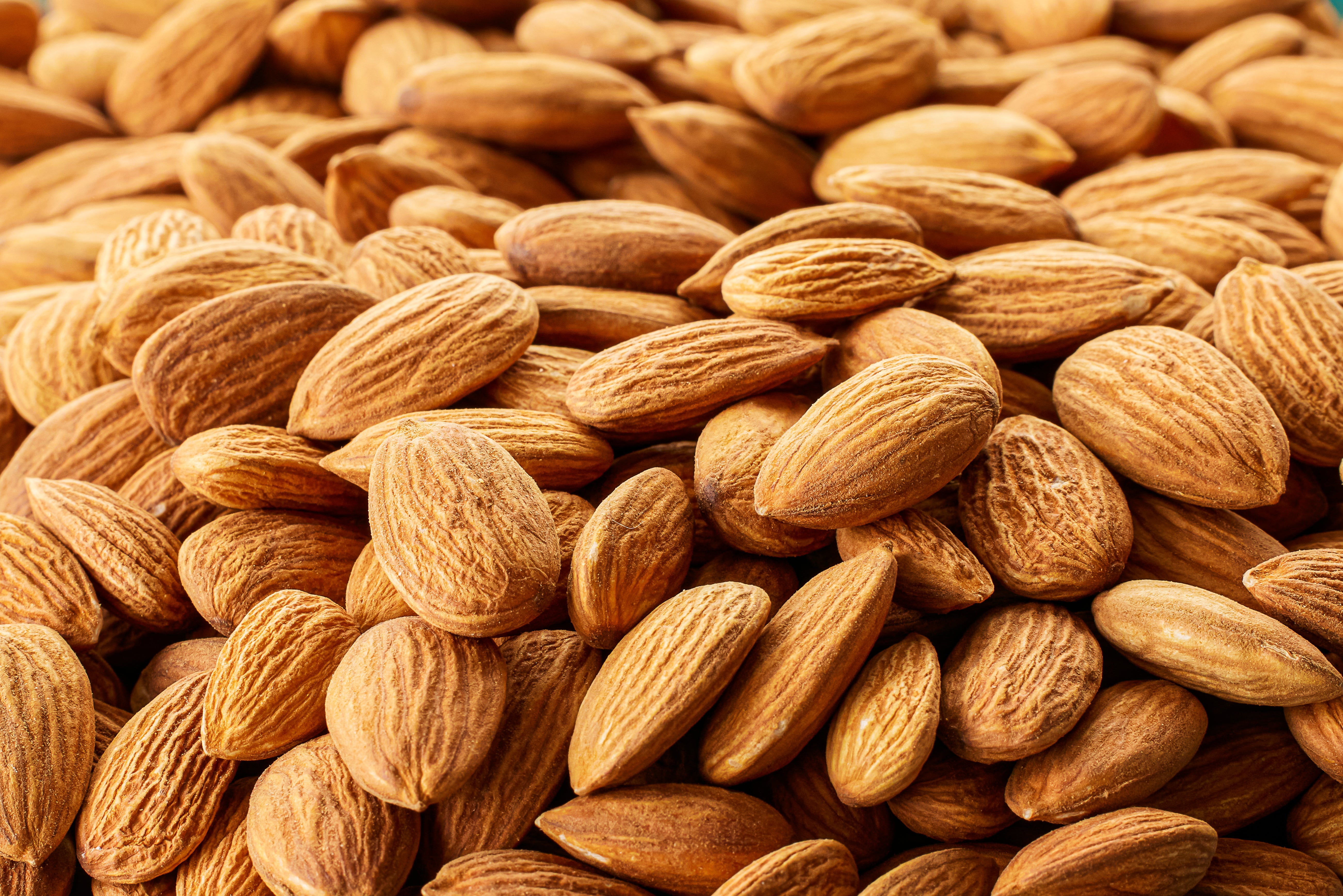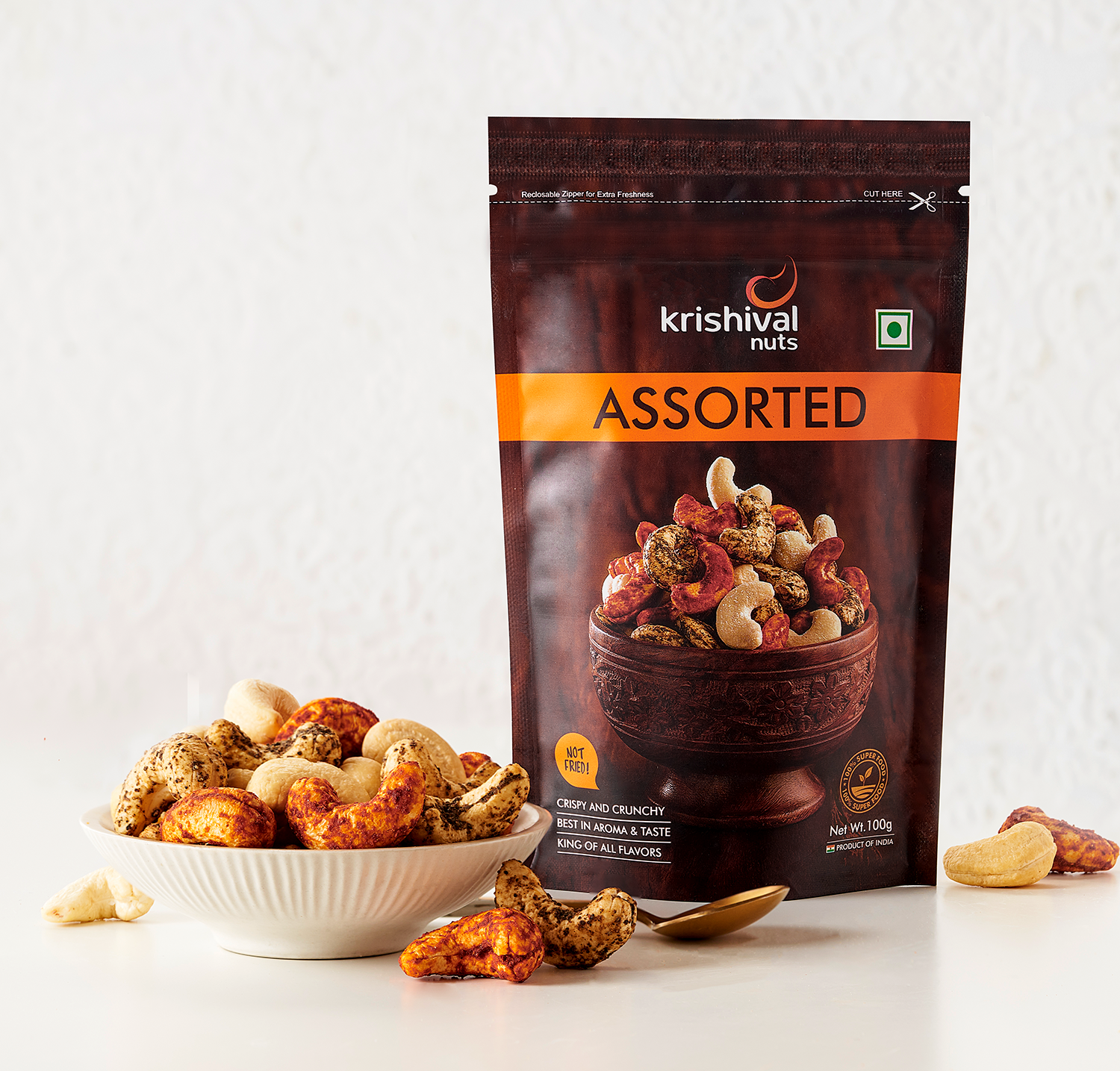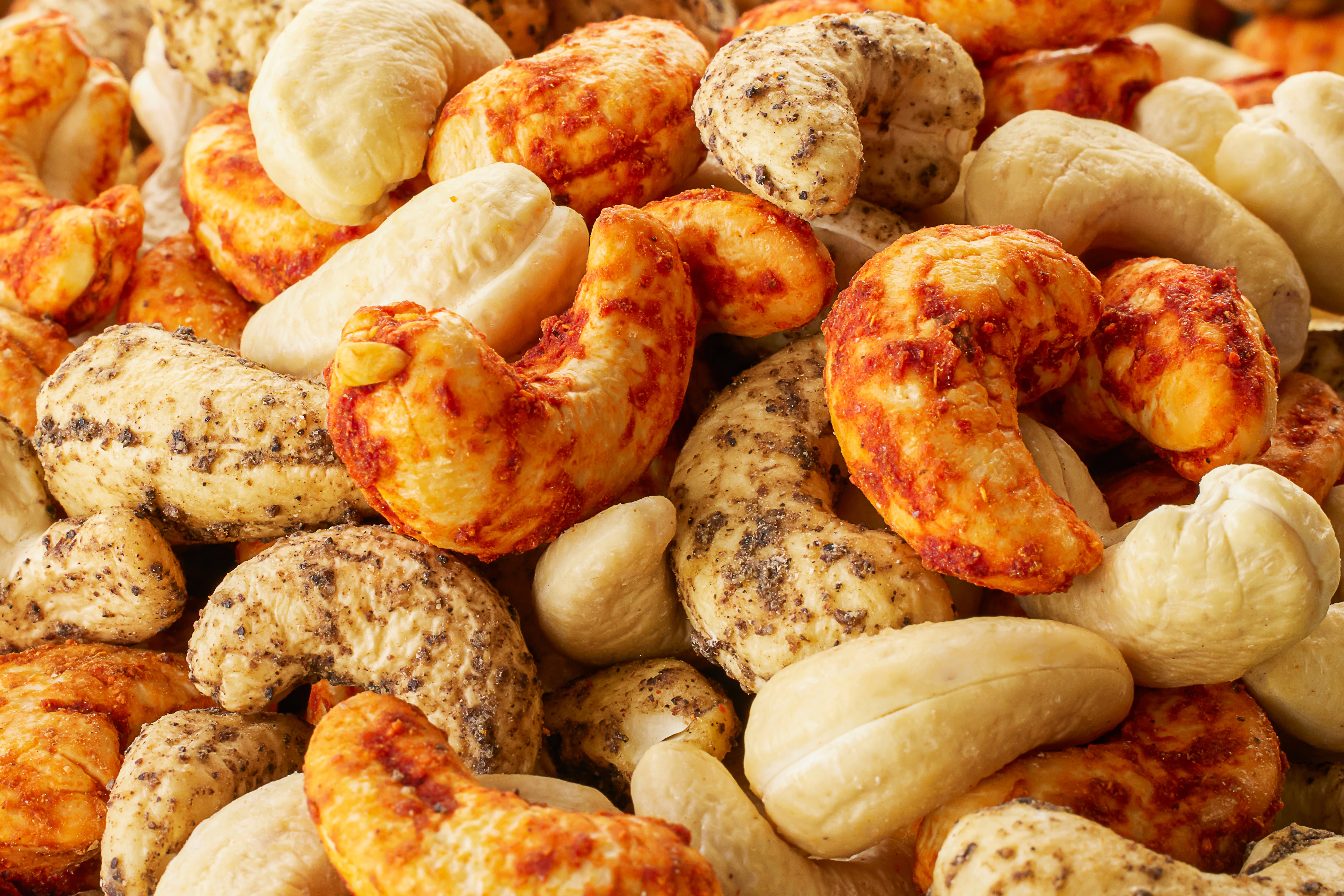Did you know that some of the best cranberries float? Their unique harvesting method, where farmers flood fields with water, is just one fascinating aspect of this superfruit. What is cranberry, you ask? It's a small, tart, red berry packed with a punch. This cranberry guide will explore its powerful health benefits, nutrition, unique cultivation process, and growing popularity in India.
This article provides a complete overview of the cranberry. It covers everything from its botany and health advantages to its farming and relevance in the Indian market. Readers will gain a thorough understanding of this versatile fruit.
Unveiling the Cranberry: Origins and Botany
The cranberry plant is a low-growing, evergreen shrub. Its most common botanical name is Vaccinium macrocarpon, also known as the American cranberry. This species is the one most often grown for commercial use. There is also a related species, Vaccinium oxycoccos, sometimes called the common or small cranberry. Cranberries belong to the same family as blueberries and lingonberries.
This fruit's story begins in North America. Native Americans historically used cranberries for food, medicine, and even as a dye. They recognized its value long before European settlers began cultivating it in the early 1800s. The plant itself grows on long, vine-like shoots that spread across the ground, forming a thick mat.
Here are some key botanical facts:
- Family: Ericaceae (the heath family)
-
Genus:Vaccinium
- Species:Vaccinium macrocarpon (most common)
Cranberry Nutrition Facts: A Powerhouse of Vitamins and Compounds
Cranberry nutrition makes it a true powerhouse of vitamins and beneficial compounds. These berries are about 87% water, low in calories, and contain minimal fat or protein. A 100-gram serving of fresh, raw cranberries has about 46 calories. Their value comes from their rich supply of vitamins, minerals, and antioxidants, particularly polyphenols.
Cranberries are especially celebrated for their high antioxidant content. These antioxidants, like A-type proanthocyanidins (PACs), quercetin, and myricetin, help protect the body from damage. They are also an excellent source of several essential vitamins and minerals.
Here is a nutritional breakdown for 100 grams of raw cranberries:
- Calories: 46
- Carbohydrates: 12 grams
- Fiber: 3.6 grams
- Vitamin C: A vital antioxidant for skin, muscle, and bone health.
- Vitamin E: An essential fat-soluble antioxidant.
- Vitamin K1: Important for blood clotting.
- Manganese: Crucial for growth and the body's antioxidant system.
- Copper: A trace element that can support heart health.
Health Benefits of Cranberries: More Than Just UTI Prevention
Cranberries offer a wide array of health benefits that go far beyond their most famous use. These advantages come from their rich profile of nutrients and powerful phytochemicals. The antioxidants in cranberries help the body fight off various health issues.
Prevents Urinary Tract Infections (UTIs)
One of the most well-known cranberry health benefits is preventing Urinary Tract Infections (UTIs). This is thanks to unique substances called A-type proanthocyanidins (PACs). These compounds work by stopping E. coli bacteria, the most common cause of UTIs, from sticking to the walls of the bladder and urinary tract. If the bacteria cannot adhere, they are flushed out, which helps prevent an infection from starting.
It's important to understand that cranberry for UTI prevention is more effective than for treatment. Studies show it is particularly helpful for women who experience recurrent UTIs, as well as for children. For an active infection, it is always best to consult a doctor.
Supports Heart Health
Cranberries also support cardiovascular health in several ways. The powerful polyphenols and antioxidants in cranberries contribute to a healthier heart. Research suggests that consuming cranberries can help improve cholesterol levels by raising the "good" HDL cholesterol and potentially lowering the "bad" LDL cholesterol.
Additionally, these berries may help reduce blood pressure and prevent damage to arteries. Some studies have shown that daily consumption of low-calorie cranberry juice improved blood vessel function, which is a key indicator of heart health. These benefits make cranberries a great addition to a heart-healthy diet.
Rich in Antioxidants and May Fight Inflammation
Cranberry antioxidants are abundant and powerful. These fruits are packed with compounds like Vitamin C, quercetin, and myricetin that fight oxidative stress caused by harmful molecules known as free radicals. This cellular damage is linked to aging and many chronic diseases.
The anti-inflammatory properties of cranberries are also significant. Chronic inflammation is a root cause of many serious health conditions. The antioxidants in cranberries, especially anthocyanins that give them their red color, help lower inflammation in the body. Consuming antioxidant-rich foods like cranberries can help reduce the risk of certain chronic diseases.
Potential Anti-Cancer Properties
Some early research suggests that compounds in cranberries might possess anti-cancer properties. Phytochemicals found in the berries have shown potential in lab studies to slow the growth of cancer cells and encourage a process called apoptosis, which is the self-destruction of cancer cells.
These effects have been observed in preclinical studies on cancer cells in test tubes. However, it is crucial to state that this research is preliminary. More studies in humans are needed to confirm any effects. Cranberries should not be considered a treatment for cancer.
Boosts Digestive Health
Cranberry digestive health benefits are another important aspect of this fruit. The fiber in cranberries helps support healthy digestion and gut function. Beyond fiber, certain compounds in cranberries may prevent harmful bacteria like Helicobacter pylori (H. pylori) from attaching to the stomach lining.
This action is significant because H. pylori is a major cause of stomach ulcers. By preventing this bacteria from taking hold, cranberries could potentially reduce the risk of developing these painful ulcers. Some studies have also shown that cranberries can help promote good bacteria in the gut.
May Improve Oral Health
The benefits of cranberries may even extend to your mouth. The same PACs that help with UTIs can also support oral health by preventing bacteria from sticking to teeth. This action helps reduce the formation of plaque, which is a primary cause of cavities and gum disease.
By controlling harmful acids and bacteria in the mouth, cranberries could help prevent tooth decay and support healthier gums. While more research is needed, these initial findings are promising for maintaining good oral hygiene.
Cranberry Cultivation: From Bog to Berry
Cranberry cultivation is fascinating due to the unique growing conditions these plants require. Understanding how cranberries are grown offers insight into the agriculture behind this popular fruit, from the farm to your table.
The Unique Cranberry Environment: Bogs and Acidic Soil
How cranberries are grown is directly tied to a special environment: the cranberry bog. Bogs are natural or man-made wetlands with acidic peat soil, sand, and a reliable supply of fresh water. These components create the perfect growing conditions for cranberry vines.
The soil needs to be acidic for the plants to thrive. Farmers often add layers of sand, which helps the vines grow and controls weeds. Though many people think cranberries grow in water, the bogs are actually dry for most of the year. Water is primarily used for harvesting and protecting the plants from frost.
Planting, Growing, and Harvesting Cranberries
Cranberry farming involves a patient process, as vines can survive and produce fruit for a very long time—some for over 150 years. Planting typically happens in the spring. The plants grow on low-lying vines that form a dense mat over the bog floor.
The cranberry harvest is famous for its two distinct methods:
- Wet harvesting: This is the most common method. Farmers flood the bogs with water, causing the hollow cranberries to float to the surface. Machines then gently knock the berries off the vines, making them easy to collect. Most wet-harvested berries are used for juice and sauce.
- Dry harvesting: For fresh fruit, farmers use walk-behind machines that comb the berries off the vines without water. This method is less common but yields the firm, fresh berries sold in grocery stores.
Major Cranberry Growing Regions (and India's Status)
The world's major cranberry growing regions are concentrated in North America. The United States leads production, with Wisconsin and Massachusetts being the top states. Canada and Chile are also significant global producers.
Regarding cranberry production in India, the country does not cultivate them on a large commercial scale. The specific climate and soil requirements make it challenging. Therefore, India is primarily an importer of cranberries, with demand for processed products like dried cranberries and juice growing steadily.
Types and Forms of Cranberries: Fresh, Dried, Juice, and More
Cranberry products are available in many forms beyond the fresh fruit. Consumers can enjoy them fresh, dried, as a juice, or in supplements, each offering a different experience and nutritional profile.
Fresh Cranberries
Fresh cranberries are known for their firm, plump texture and deep red color. They have a very tart and slightly acidic taste, so they are rarely eaten raw. Typically available in the fall, fresh cranberries are best for cooking and baking, where their tartness can be balanced with other ingredients. Eating them fresh provides the full benefits of their fiber and nutrient content.
Dried Cranberries (Craisins)
Dried cranberries are a popular snack and a common ingredient in trail mixes, salads, and baked goods. Often sold under brand names like Craisins, it's important to note that they are usually sweetened to counteract their natural tartness. This means the sugar content in dried cranberries can be high. While they still offer some antioxidants, some nutrients are lost in the drying process, so checking labels for added sugar is recommended.
Cranberry Juice
Cranberry juice is one of the most popular forms, but it is crucial to read the label. There is a big difference between 100% unsweetened cranberry juice and cranberry juice cocktails. Unsweetened cranberry juice is very tart but contains the most health benefits, particularly for UTI prevention.
Cranberry juice cocktails, on the other hand, are often blended with other fruit juices and contain a lot of added sugar, which can reduce their health advantages. Also, remember that all forms of juice have the fiber removed, which is an important part of the whole fruit's nutrition.
Cranberry Sauce and Jellies
Cranberry sauce and jellies are traditional holiday side dishes. These products are almost always high in sugar to create their sweet, spreadable texture. While they are a tasty accompaniment, they offer fewer health benefits than less-processed forms of the fruit. Making homemade cranberry sauce can be a great way to control the amount of sugar.
Cranberry Supplements (Extracts, Powders, Pills)
For those seeking the health benefits without the tart taste or sugar, cranberry supplements are an option. Available as cranberry extracts, powders, or pills, these products offer a concentrated dose of the fruit's active compounds. They are most often used for UTI prevention.
When choosing cranberry pills for UTI, it's important to look for products that specify their PACs content, as this is the key active ingredient. It is always a good idea to consult with a healthcare provider before starting any new supplement regimen to ensure it is right for you.
Potential Side Effects and Precautions of Cranberry Consumption
While cranberries are generally safe and healthy for most people, there are some potential side effects and precautions to consider. Excessive consumption or use by certain individuals can lead to issues.
Kidney Stones
Cranberries contain compounds called oxalates. In high amounts, oxalates can contribute to the formation of kidney stones in people who are already susceptible to them. Therefore, individuals with a history of kidney stones should consume cranberries in moderation.
Interaction with Blood Thinners (Warfarin)
A significant precaution involves the interaction between cranberries and blood thinners like Warfarin. Cranberries contain Vitamin K, which plays a role in blood clotting, and other compounds that can affect how these medications work. This interaction could potentially increase the risk of bleeding. Anyone taking Warfarin should consult their doctor before adding significant amounts of cranberry to their diet.
Stomach Upset
Consuming very large quantities of cranberries or cranberry juice can sometimes cause stomach upset or diarrhea. This is often due to the fruit's high acidity and fiber content. Moderation is key to avoiding these digestive issues.
Aspirin Allergy
Cranberries naturally contain salicylic acid, which is a key component of aspirin. Individuals who have an aspirin allergy might have a similar reaction to consuming large amounts of cranberries. This is a rare concern but worth noting for those with this specific allergy.
Sugar Content in Processed Products
A major precaution relates to the high added sugar content in many commercial cranberry products, especially juices and dried cranberries. People with diabetes or anyone monitoring their sugar intake should be particularly cautious and choose unsweetened products whenever possible.
Cranberries in India: A Growing Trend
The popularity of cranberries in India is on the rise. Once an exotic item, these berries are now increasingly available in the Indian market, mostly as imported dried fruit or juice. They are often promoted as a superfruit, and consumer trends show a growing awareness of their health benefits.
Data shows that cranberry imports to India have increased significantly in recent years, with the United States being a major supplier. This trend is driven by rising health consciousness and the versatility of cranberries in both snacks and cooking. As more Indians discover this tart berry, its presence in kitchens and markets across the country continues to expand.
Culinary Uses of Cranberries in Indian Cuisine
The use of cranberry in Indian cuisine is a growing trend, with chefs and home cooks finding creative ways to incorporate it into both traditional and fusion dishes. The berry's unique tart and slightly sweet flavor profile makes it a versatile ingredient.
Here are a few examples of how cranberries are used in Indian recipes:
- Cranberry Chutney: A modern twist on a classic condiment.
- In Dals or Curries: Adding a surprising note of tartness.
- Fusion Sweets: Such as in cranberry-infused laddoos or barfis.
- As a Garnish: Sprinkled over rice dishes like pulao or biryani.
- Tamarind Substitute: In some South Indian dishes, dried cranberries are used to provide a similar sour flavor.
How to Select, Store, and Use Cranberries
Here is some practical advice on how to choose, store, and enjoy this versatile fruit.
Selecting Cranberries
- Fresh Cranberries: Look for berries that are firm, plump, and have a deep, rich red color. A good test for freshness is to see if they bounce; high-quality, fresh cranberries are sometimes called "bounceberries" for this reason. Avoid any that look shriveled or bruised.
- Dried Cranberries: When choosing dried cranberries, check the ingredient list. Many brands add significant amounts of sugar, so look for unsweetened options or those with lower sugar content if possible.
Storing Cranberries
- Fresh Cranberries: You can store fresh cranberries in the refrigerator for up to a few weeks. For longer-term storage, they freeze exceptionally well. Simply place them in a freezer-safe bag, and they can last for up to a year.
- Dried Cranberries: Store dried cranberries in a cool, dark place in an airtight container. They will last for several months at room temperature.
Simple Ways to Add Cranberries to Your Diet
- Toss them into your morning cereal, oatmeal, or yogurt.
- Blend them into smoothies for a tart kick.
- Add dried cranberries to salads for a burst of flavor and texture.
- Incorporate them into baked goods like muffins, scones, and bread.
- Make a simple, homemade cranberry sauce to serve with poultry or other meats.
Conclusion: The Versatile and Vibrant Cranberry
In summary, the cranberry is a remarkably nutritious fruit with a unique story. This cranberry benefits summary highlights its power in preventing UTIs, supporting heart health, and providing a wealth of antioxidants. Its unique cultivation in flooded bogs is as fascinating as its health properties.
While cranberries are mostly imported to India, they are quickly finding a place in Indian diets, celebrated for their versatility and superfruit status. When eating cranberries, it's wise to choose fresh, frozen, or unsweetened forms to get the most benefit without the added sugar found in many processed products. Incorporating this vibrant red berry into a balanced diet is a simple and delicious way to boost your health.
Frequently Asked Questions (FAQs) about Cranberries
Are cranberries a fruit?
Yes, cranberries are a type of fruit. They are small, tart berries that grow on low-lying evergreen shrubs.
What do cranberries taste like?
Raw cranberries have a very tart, sharp, and slightly acidic flavor. Because of this, they are most often cooked or processed with a sweetener.
Can you eat cranberries raw?
Yes, you can eat cranberries raw, but most people find their intense tartness unpalatable.
What are the main benefits of cranberry juice?
The primary benefit of cranberry juice is helping to prevent urinary tract infections (UTIs). For the most benefits, it's best to choose 100% unsweetened juice.
Are dried cranberries as healthy as fresh?
Fresh cranberries are generally more nutritious, offering more fiber and no added sugar. Dried cranberries often contain added sugar, which increases their calorie count.
How do cranberries help with UTIs?
Cranberries contain compounds called A-type proanthocyanidins (PACs) that prevent E. coli bacteria from sticking to the walls of the urinary tract.
Do cranberries grow in India?
Cranberries are not grown commercially on a large scale in India due to specific climate and soil needs. They are mostly imported.
Are cranberries good for weight loss?
Fresh cranberries are low in calories and high in fiber, which can help with weight management by promoting a feeling of fullness. However, be mindful of processed cranberry products that are high in sugar.
Can diabetics eat cranberries?
People with diabetes can eat fresh cranberries in moderation. They should be very cautious with sweetened dried cranberries and cranberry juices due to their high sugar content.
What is the best way to consume cranberries for health benefits?
Fresh or frozen cranberries and unsweetened cranberry juice offer the most health benefits. Supplements are also an option, but you should consult a doctor first.
How are cranberries harvested?
They are harvested either through "wet harvesting," where bogs are flooded and the floating berries are collected, or "dry harvesting" with machines for fresh fruit.
What are common cranberry varieties?
There are over 100 varieties, but some common ones grown commercially include 'Early Black,' 'Howes,' 'Stevens,' and 'Pilgrim.'
Can cranberries help with kidney stones?
No, the opposite may be true for some people. Because cranberries contain oxalates, excessive intake might increase the risk of kidney stone formation in susceptible individuals.
What is 'Karonda' and is it the same as cranberry?
Karonda (Carissa carandas) is an Indian berry that is also tart, but it is not the same as a cranberry. They are from different botanical families.
Where can I buy cranberries in India?
You can find cranberries, usually dried or as juice, in larger supermarkets, specialty food shops, and on online grocery platforms.

